Groin Pulls: An introduction
What is it? What do I do? How will this help me?
The adductor group, typically referred to as the groin, is a group of muscles found on the inner thigh. A strain, often referred to as a pulled muscle, is a muscle tear. Therefor an adductor strain, commonly spoken as a pulled groin, is a tear to the inner thigh muscles. This muscle group plays a dominant role in both hip stabilization as well as lateral motions. Sports that engage in high levels of dynamic stability (stability through motion) as well as pivoting and lateral motion are susceptible to adductor strains.
Most muscle strains happen during the eccentric phase of muscle contraction; when a muscle is firing but the force of resistance is greater causing the muscle fibers to continue elongating. This contraction often occurs in sports when an athlete engages in an abrupt and forceful change of direction such as pivoting or cutting. For most, the adductors are typically found to be weak and lacking in full range of motion which increases the likelihood of those muscles tearing during a rapid onset of an eccentric contraction(Hrysomallis, 2009).
Treatment for an adductor strain, or any strain, will vary based upon the phase of healing (Nicholas & Tyler, 2002). The acute phase (first few days) is best addressed with rest, pain free range of motion (ROM), massage, and gentle adductor activation with isometric actions (contraction without motion) being the safest and most effective. The sub-acute phase (next few weeks) should involve single leg stability, gentle concentric strengthening (muscle firing and shortening), massage, and moving the joint safely through greater ranges of motion. The chronic phase includes increasing resistance and intensity, controlled eccentric contractions (contraction while lengthening – also known as “negatives”), sport specific movement to encourage neurologic patterning, massage, and moving through greater ranges of motion(Tyler, Nicholas, Campbell, Donellan, & Mchugh, 2002).
In addition to treating the injured tissue we want to ensure we gently mobilize, soften and activate the antagonists (muscles that do the opposite action). With adductor strains we want to make sure we gently stretch, mobilize and activate the gluteus medius and minimus muscles primarily, as well as balance all other muscles of the hip. Improvements to overall hip function and balance have also been demonstrated to reduce risk of low back pain, knee injury – specifically ACL injuries, varying hip injuries and ankle injury(Longjohn & Dorr, 1998; Stearns & Powers, 2014). It’s important to keep in the mind that dysfunctions both above and below the hips could be contributing to these issues as well(Chong & Franklin, n.d.).
Please feel free to contact us with any questions or to learn more.
References
Chong, R., & Franklin, M.-E. (n.d.). Initial evidence for the mixing and soft assembly of the ankle, suspensory, and hip muscle patterns. http://doi.org/10.1007/s002210000578
Hrysomallis, C. (2009). Hip Adductors’ Strength, Flexibilty, and Injury Risk. Journal of Strength and Conditioning Research, 23(5), 1514–1517.
Longjohn, D., & Dorr, L. D. (1998). Soft Tissue Balance of the Hip. The Journal of Arthroplasty, 13(1).
Nicholas, S., & Tyler, T. (2002). Adductor Muscle Strains in Sport. Sports Medicine, 32(5), 339–344.
Stearns, K. M., & Powers, C. M. (2014). Improvements in hip muscle performance result in increased use of the hip extensors and abductors during a landing task. The American Journal of Sports Medicine, 42(3), 602–9. http://doi.org/10.1177/0363546513518410
Tyler, T. F., Nicholas, S. J., Campbell, R. J., Donellan, S., & Mchugh, M. P. (2002). The Effectiveness of a Preseason Exercise Program to Prevent Adductor Muscle Strains in Professional Ice Hockey Players*. The American Journal of Sports Medicine, 30(5).

0 Comments